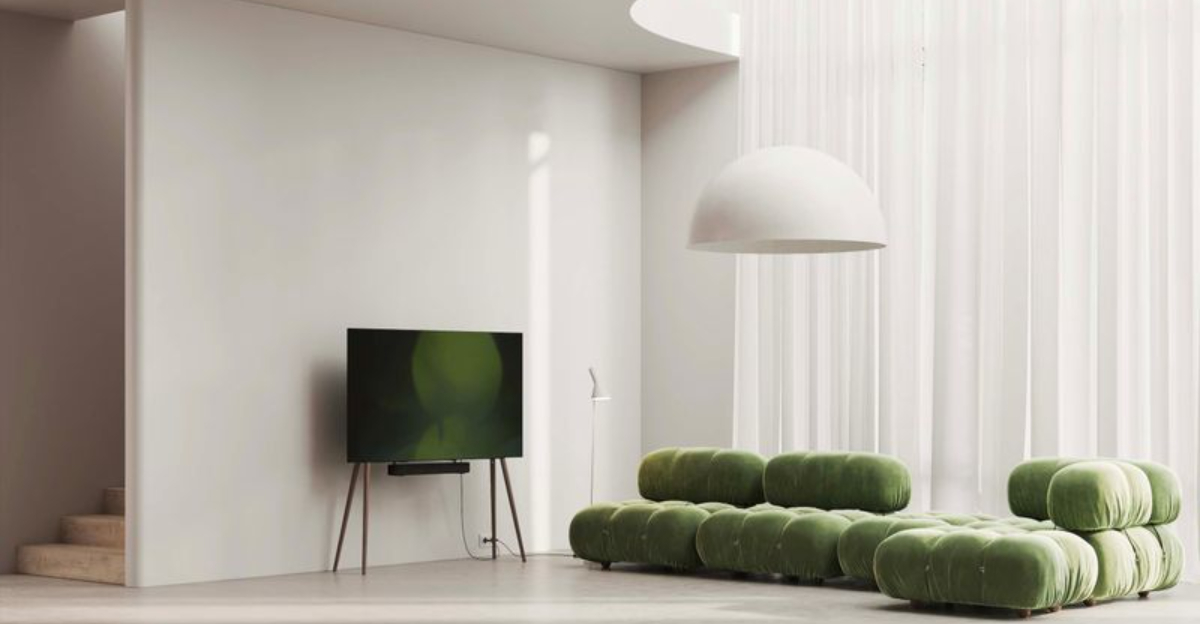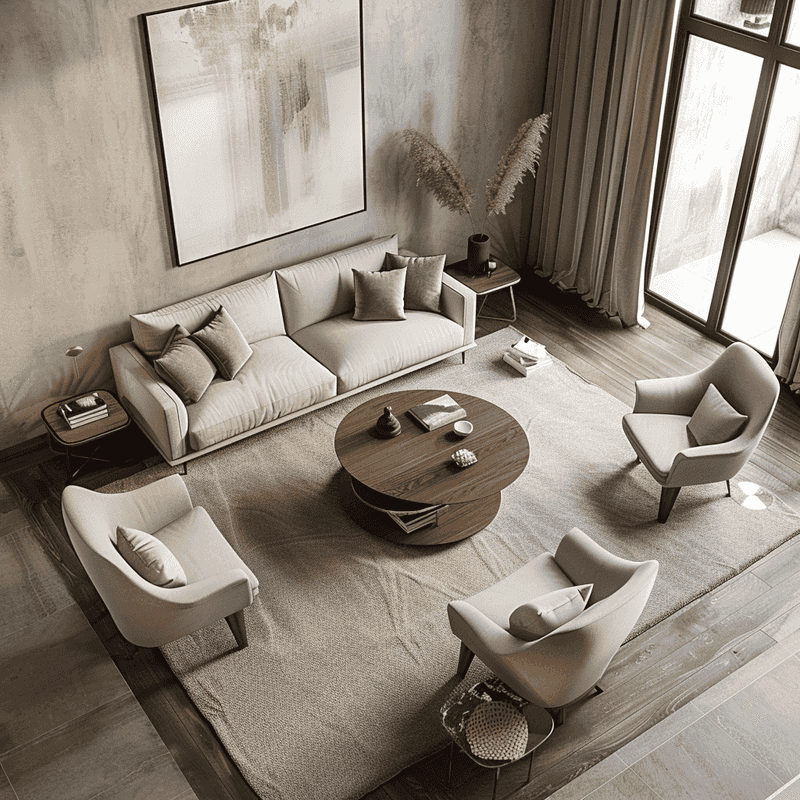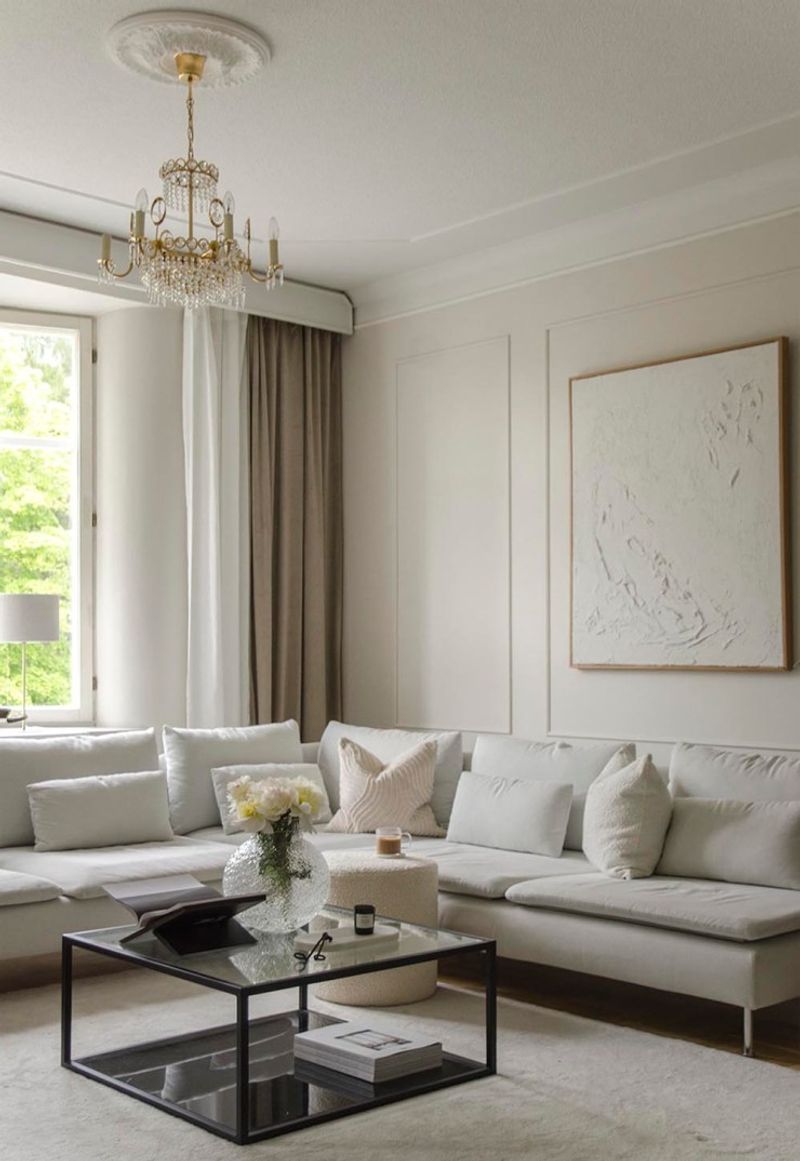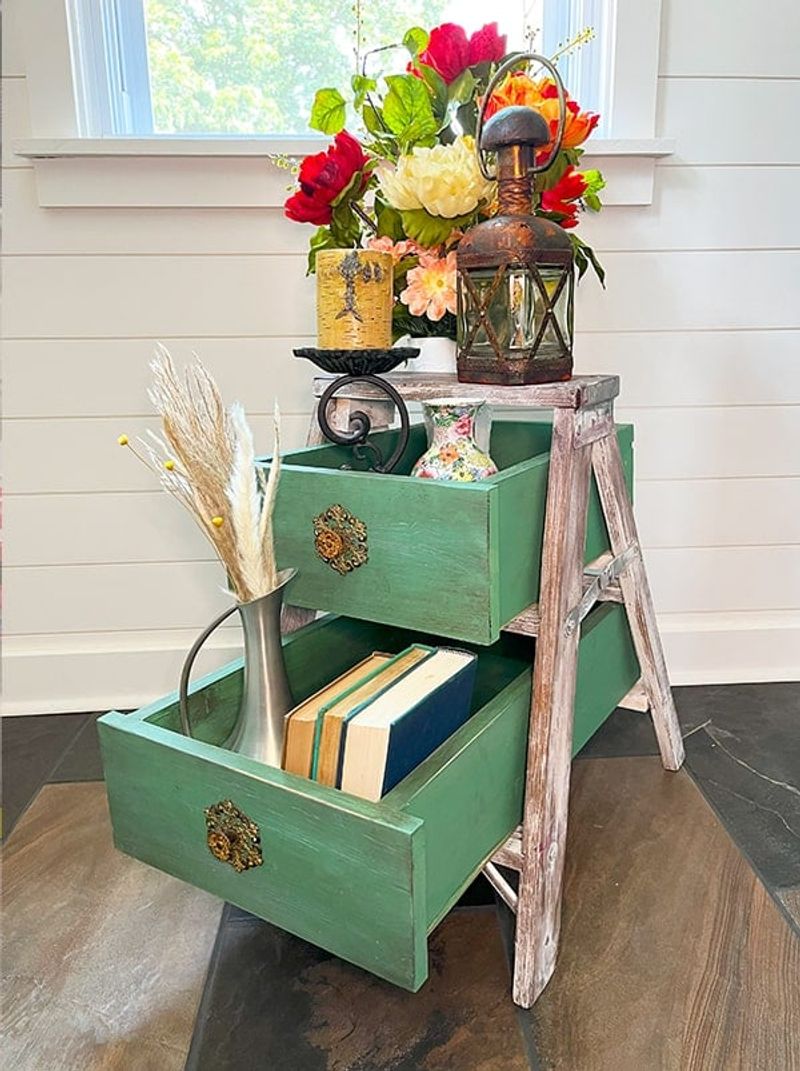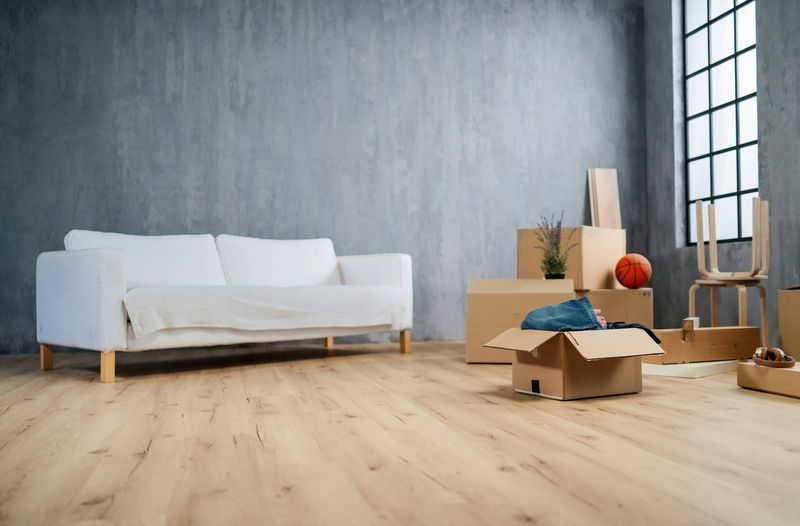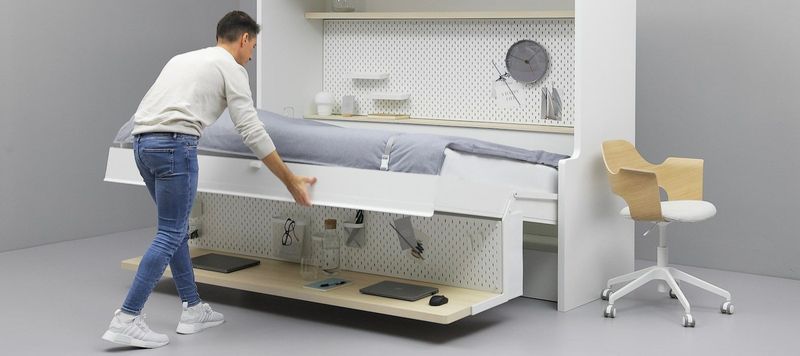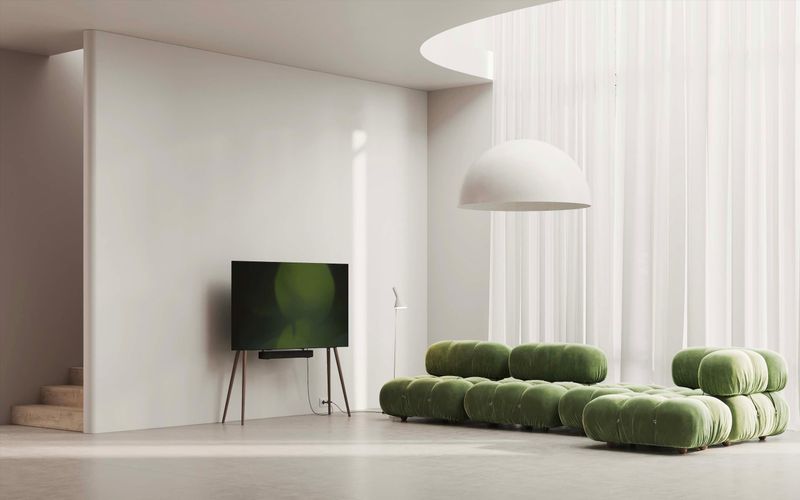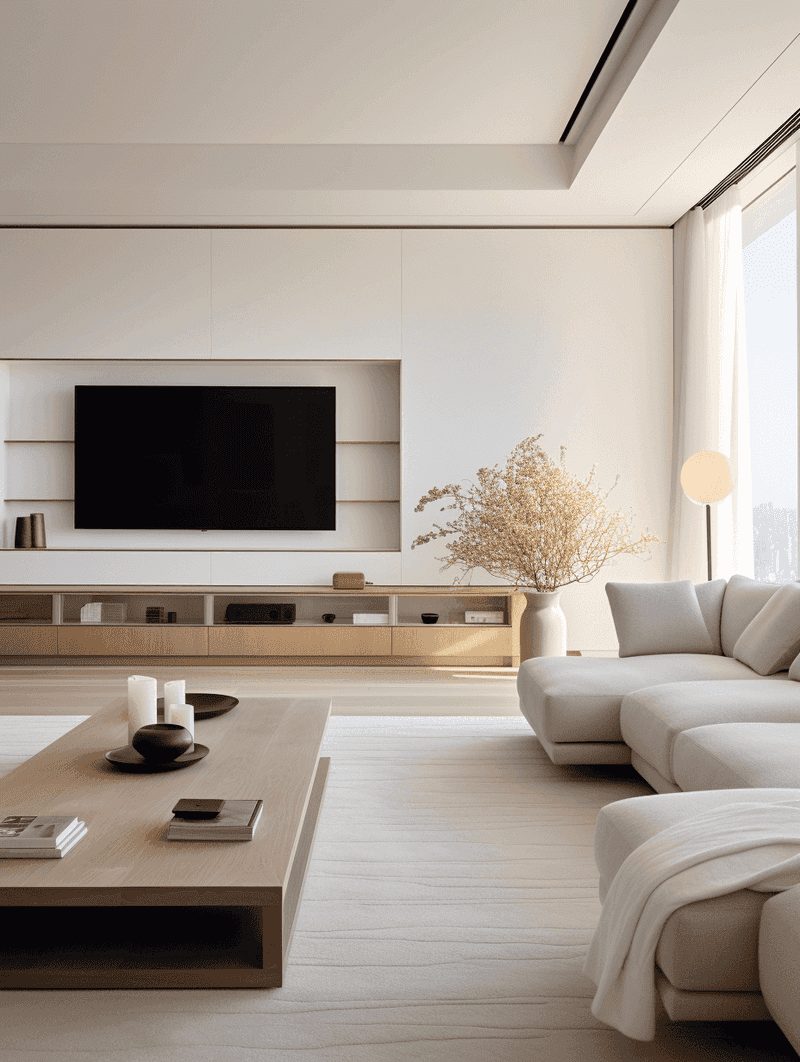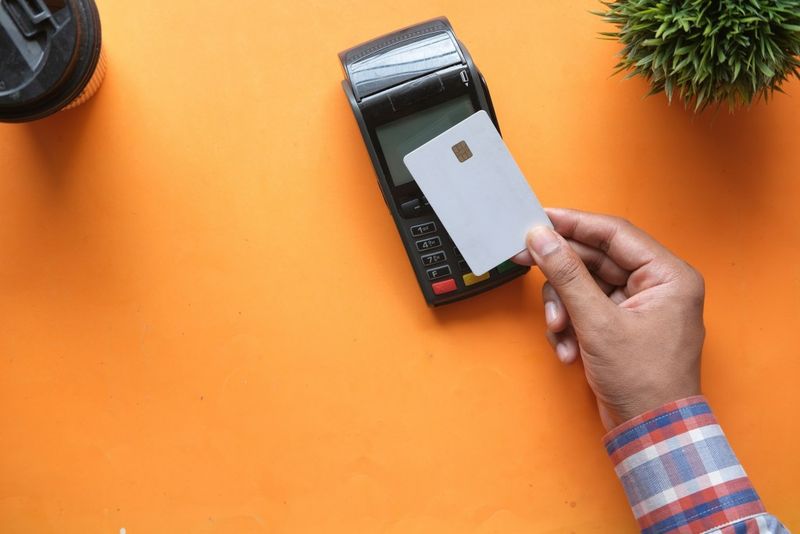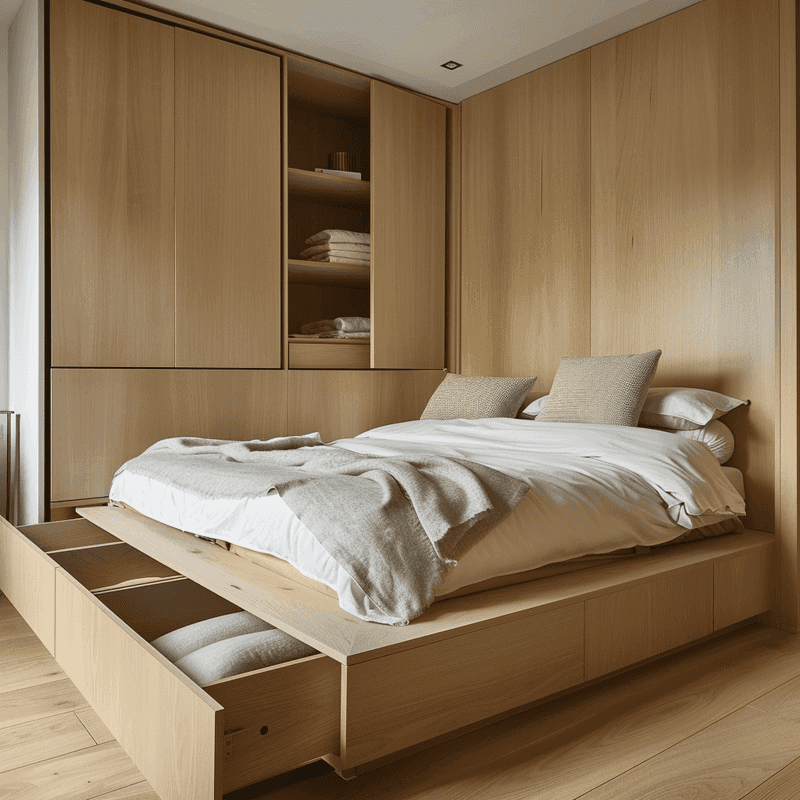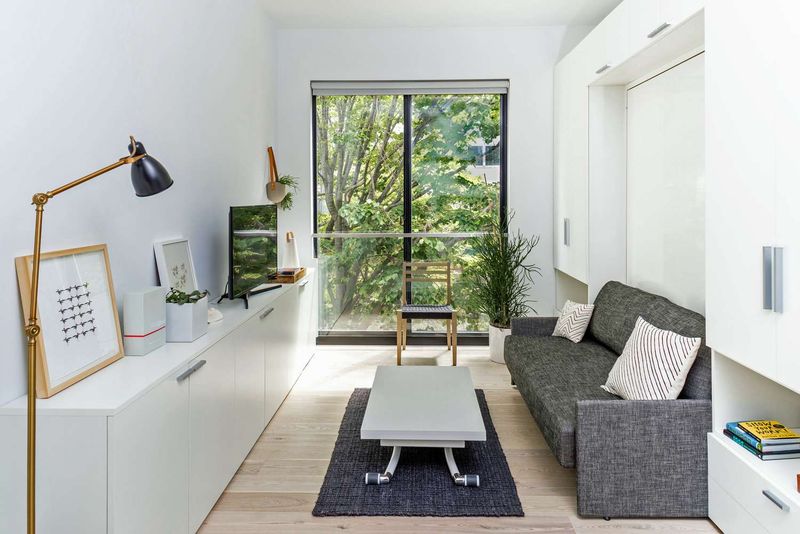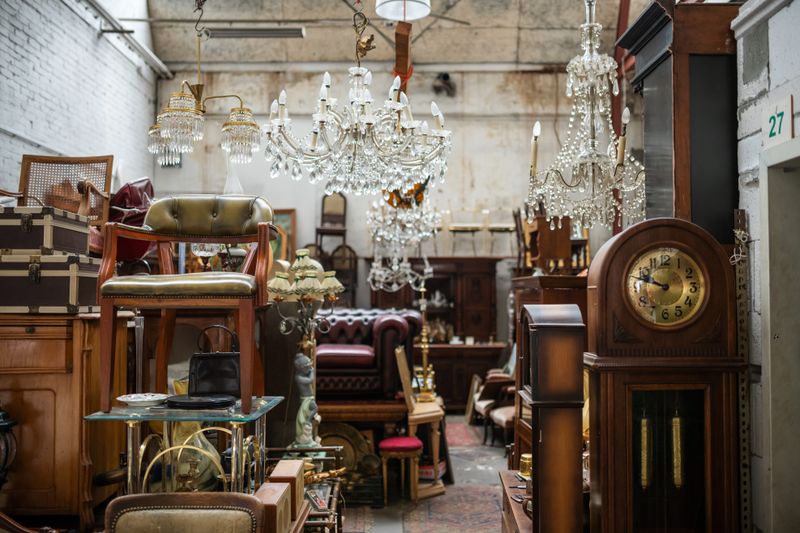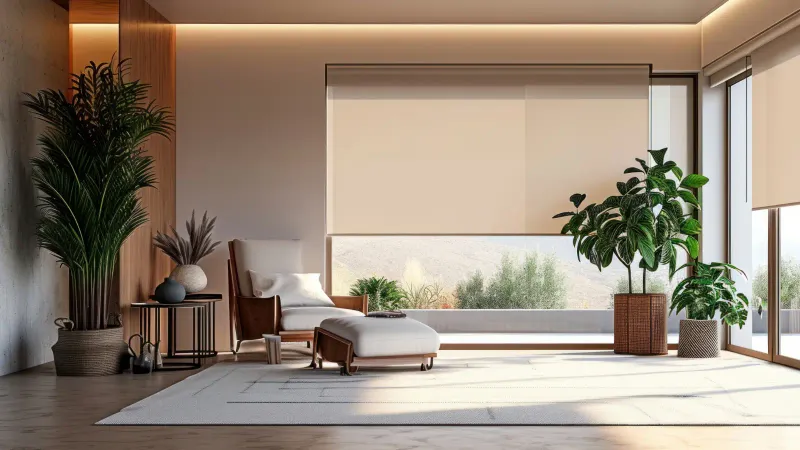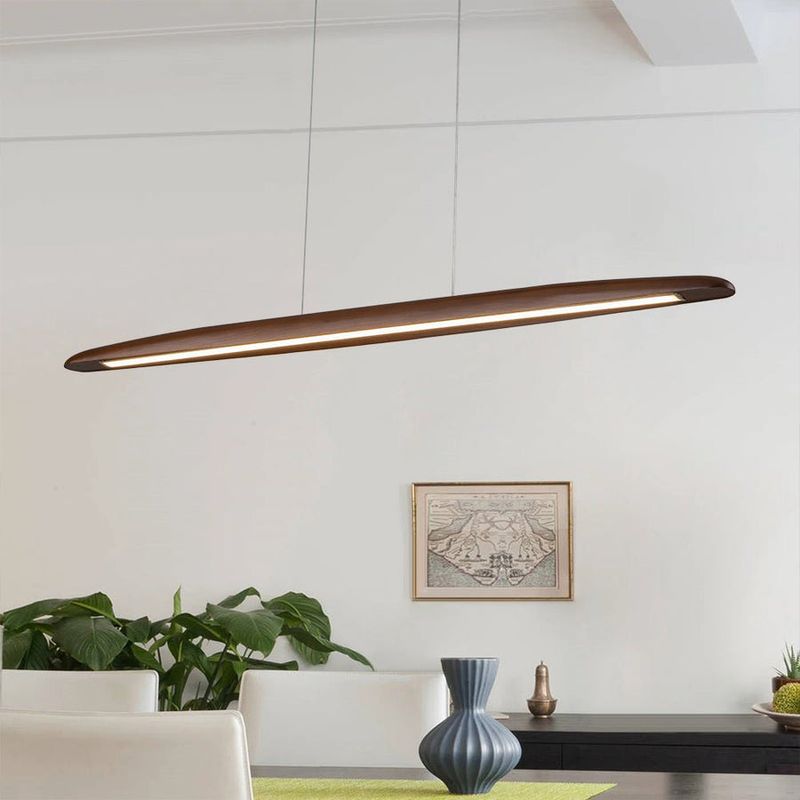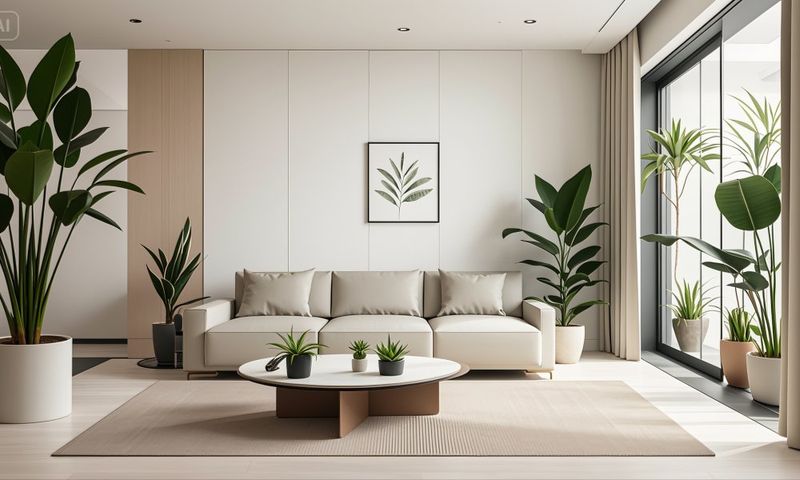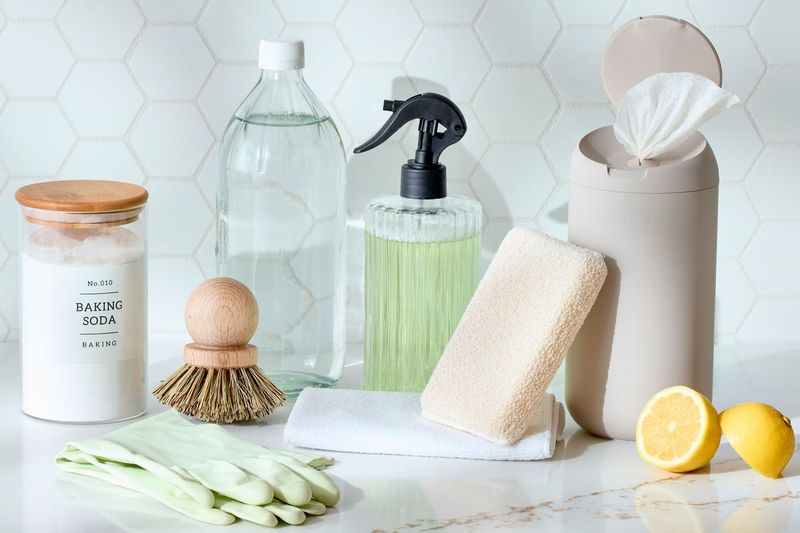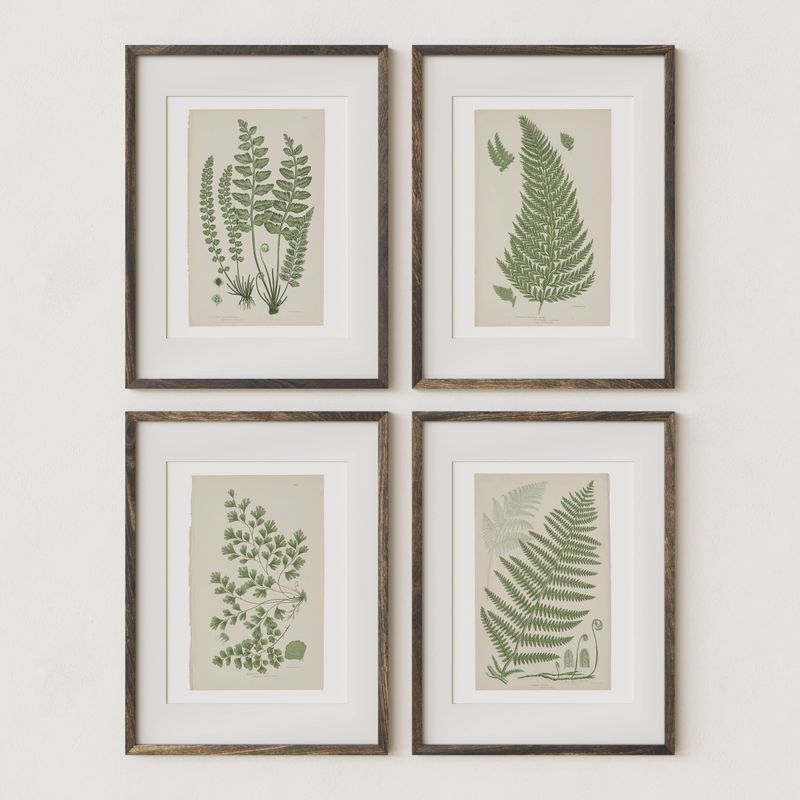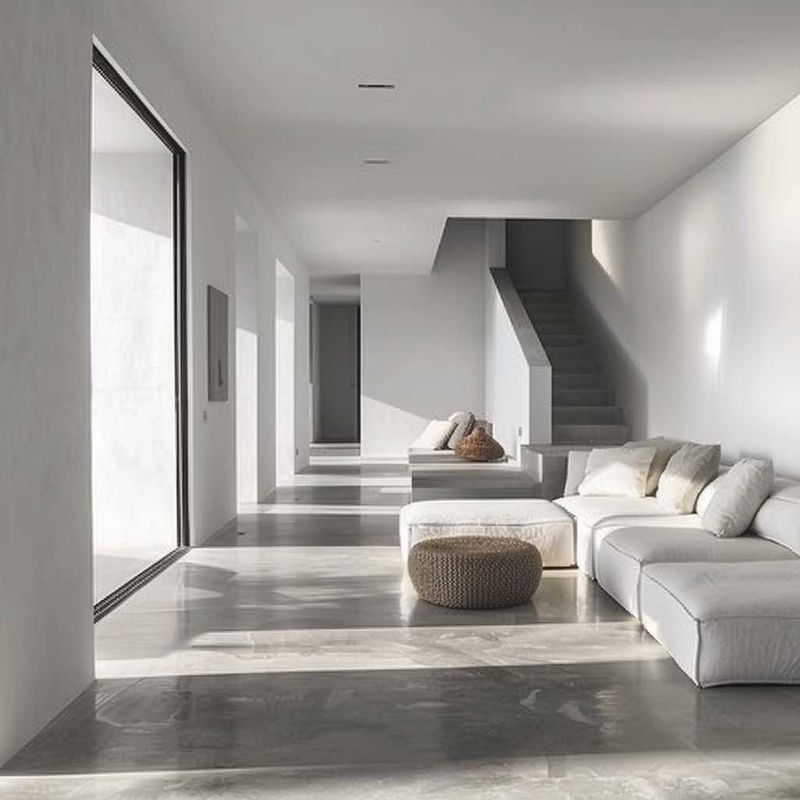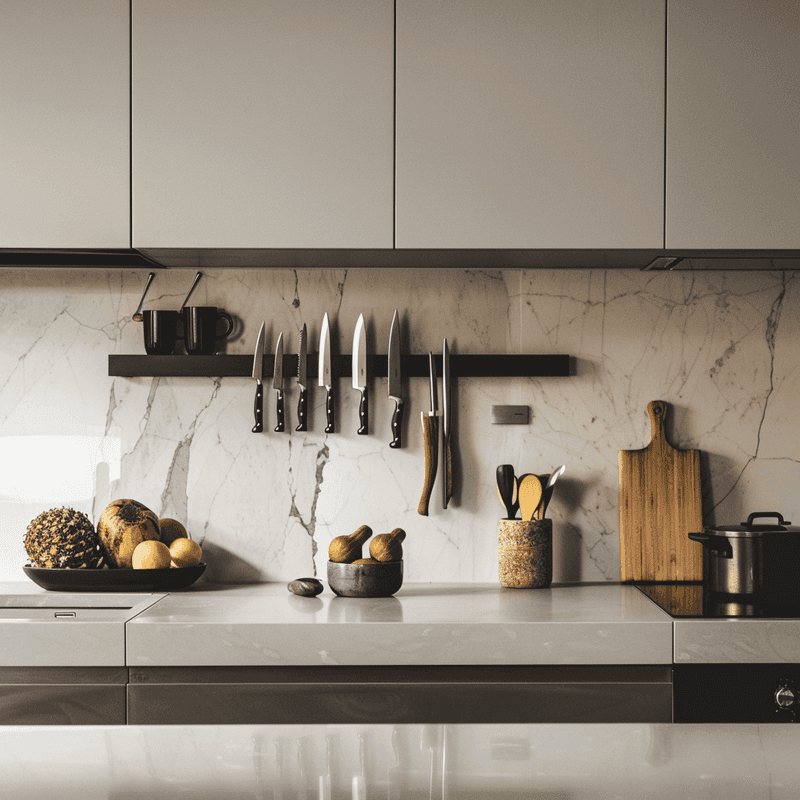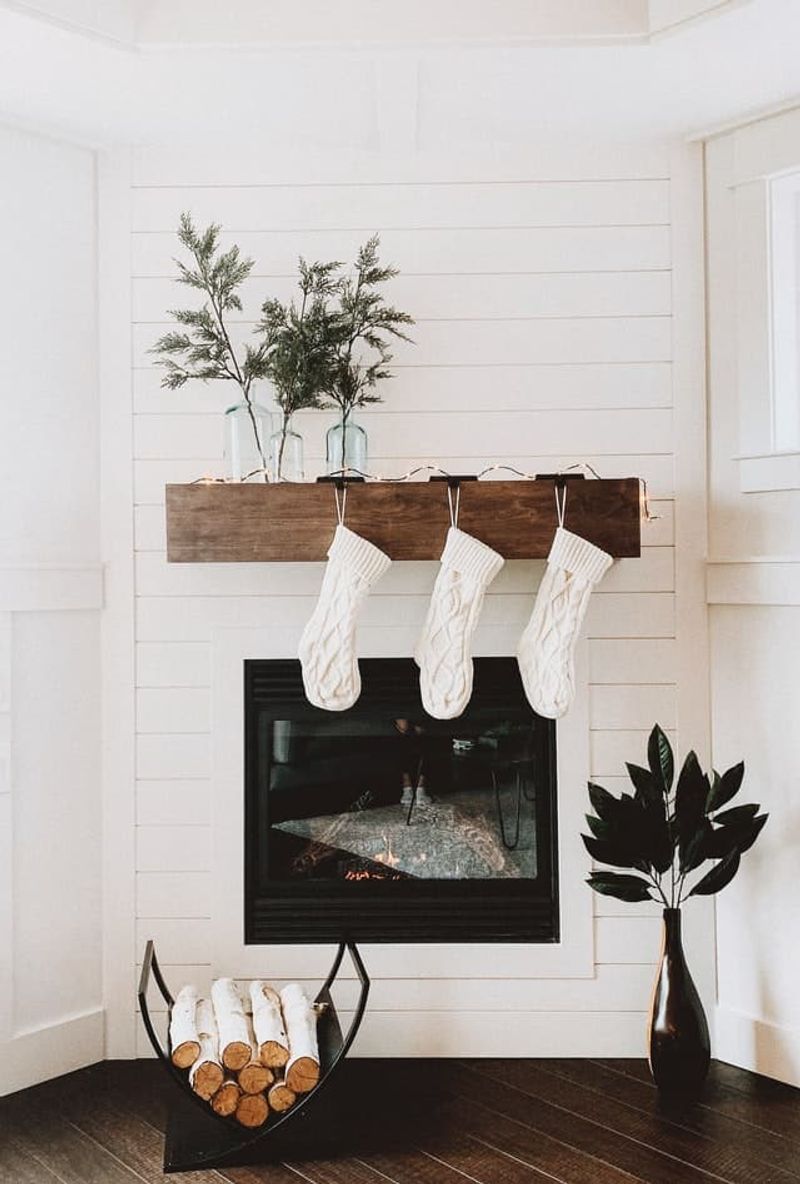Looking to refresh your home without breaking the bank? Minimalist interior design isn’t just trendy – it’s a practical approach that can seriously cut costs while creating a peaceful, clutter-free space.
By focusing on what truly matters and eliminating excess, you’ll discover that less really can be more for both your home and your wallet.
It’s time to explore 20 minimalism can transform your space and save you money!
1. Buy Less, Choose Better
Quality over quantity becomes your new mantra when embracing minimalist design. Instead of filling rooms with numerous cheap items that quickly wear out, invest in fewer, well-made pieces that stand the test of time.
This approach might seem more expensive initially, but calculating cost-per-use reveals substantial long-term savings. Those carefully selected items often bring more joy too!
When shopping, ask yourself: “Will this still function and look good in five years?” If not, it probably doesn’t deserve space in your minimalist home.
2. Neutral Color Palette Perks
Forget constantly repainting to keep up with seasonal color trends! A timeless neutral palette creates a serene backdrop that rarely needs updating, saving hundreds in redecoration costs over the years.
Whites, beiges, grays, and soft earth tones work harmoniously together, allowing you to mix and match without worry. When you do crave change, small colorful accessories can refresh the space inexpensively.
These understated hues also maximize natural light, potentially reducing daytime electricity usage while making spaces feel larger and more open.
3. Creative Repurposing Projects
Who needs new when old can be transformed? Breathing fresh life into existing items through sanding, painting, or reupholstering saves substantial money while creating unique pieces with character and history.
An old wooden ladder becomes a stylish bookshelf, while mason jars transform into elegant lighting fixtures. These creative solutions often cost just a fraction of store-bought alternatives.
Beyond the financial benefits, repurposing reduces landfill waste and gives you the satisfaction of creating something beautiful with your own hands. The compliments from visitors are just a bonus!
4. Decluttering for Cash
Turn your excess into extra money! Selling unused items through online marketplaces, consignment shops, or yard sales can generate surprising amounts of cash while simultaneously creating the clean, open spaces minimalism celebrates.
Many people discover hundreds or even thousands of dollars hiding in their closets, garages, and storage units. That vintage lamp gathering dust might be someone else’s treasure.
The psychological benefits match the financial ones – studies consistently show that reducing physical clutter decreases stress and increases focus, potentially improving productivity in your newly streamlined space.
5. Multipurpose Furniture Magic
Imagine the savings when one piece of furniture serves multiple functions! Convertible sofas that transform into guest beds, coffee tables with hidden storage, or dining tables that double as workspaces create versatility without requiring additional purchases.
Smart homeowners know these dual-purpose items eliminate the need for separate pieces, reducing both upfront costs and the square footage needed. Your wallet and space constraints will thank you.
Many contemporary furniture designers now specialize in these clever solutions, creating beautiful pieces that never sacrifice style for functionality.
6. Energy Efficiency Boost
Fewer items plugged in means lower electric bills! Minimalist spaces typically contain less energy-draining electronics and appliances, naturally reducing consumption without sacrificing comfort.
Strategic furniture placement that doesn’t block heating vents or natural light sources further optimizes energy efficiency. Many minimalists report utility bill reductions of 10-20% after simplifying their spaces.
The environmental impact matches the financial one – your smaller carbon footprint benefits both your budget and the planet. It’s a perfect example of how minimalism aligns personal and global well-being.
7. DIY Minimalist Decor
Channel your inner artist with simple DIY projects that perfectly complement minimalist aesthetics! Hand-painted geometric wall art, macramé plant hangers, or framed nature photographs create visual interest without store-bought prices.
Many stunning minimalist decor elements rely on simple forms and natural materials rather than elaborate detailing. This accessibility makes them perfect for even novice crafters.
Beyond saving money, creating your own decor ensures pieces perfectly match your vision and color scheme. The personal connection to items you’ve made yourself adds meaningful depth to your space that no purchased item can match.
8. Maintenance Cost Reduction
Less stuff equals less cleaning time and fewer repair bills! Minimalist homes simply have fewer items that can break, need dusting, or require professional cleaning services.
Without overcrowded surfaces collecting dust or complex furniture with hard-to-reach crevices, regular maintenance becomes quicker and more efficient. Many minimalists find they can clean their entire homes in under an hour.
The simplified cleaning routine means fewer specialty products and tools are needed, creating another layer of savings. Your streamlined space basically cleans itself compared to cluttered alternatives!
9. Intentional Shopping Habits
Adopting a minimalist mindset transforms shopping from mindless consumption to thoughtful curation. You’ll naturally develop a mental filter that questions each potential purchase: “Do I truly need this? Does it serve multiple purposes? Will it last?”
Many converts to minimalism report their impulse purchases dropping by 50% or more once they embrace these principles. The waiting period before buying becomes a powerful money-saving tool.
Creating a wishlist with mandatory waiting periods (30 days for larger purchases) gives excitement time to fade, revealing whether you genuinely need the item or were just momentarily enchanted.
10. Smart Storage Solutions
Hidden storage becomes your secret weapon in maintaining clean minimalist aesthetics while accommodating life’s necessities. Under-bed containers, ottoman storage, and wall-mounted solutions eliminate the need for bulky storage furniture.
When every item has a designated home, you’ll stop buying duplicates of things you already own but can’t find. This “invisible organization” prevents the costly cycle of purchasing, losing, and repurchasing common household items.
Many minimalists discover they need significantly less storage than they imagined once they’ve eliminated unnecessary possessions. The resulting space feels both more open and more functional.
11. Smaller Space Living
Could your minimalist lifestyle enable downsizing to a smaller, more affordable home? Many practitioners find they need far less square footage once they embrace simpler living, potentially saving thousands annually on mortgage or rent payments.
Reduced utility costs, lower property taxes, and decreased maintenance expenses create additional layers of savings. Even staying in your current home, you might repurpose rarely-used rooms for more practical functions.
Smaller spaces naturally discourage excessive purchases since physical limitations make you consider what truly deserves your space. It’s a built-in spending governor that protects your budget!
12. Second-Hand Treasure Hunting
Vintage shops, estate sales, and online marketplaces often yield high-quality furniture at fractions of retail prices. Solid wood pieces from decades past frequently outperform today’s mass-produced items in both durability and character.
Patient second-hand shoppers can furnish entire rooms for the price of a single new piece. Creating a specific wishlist helps focus these treasure hunts on items you genuinely need.
Many iconic mid-century modern pieces that perfectly complement minimalist aesthetics can be found second-hand for surprisingly reasonable prices. Their clean lines and timeless design principles have kept them relevant for generations.
13. Simplified Window Treatments
Forget elaborate curtains with their hefty price tags! Minimalist window treatments like simple roller blinds, bamboo shades, or even bare windows (where privacy permits) dramatically reduce costs while maximizing natural light.
Beyond the initial savings, these streamlined options eliminate expensive professional cleaning requirements and complicated installation processes. Their timeless appeal also means you won’t feel pressured to replace them as trends change.
Many minimalists discover that removing heavy window coverings instantly makes rooms feel larger, brighter, and more connected to nature – a free upgrade that transforms the entire space!
14. Mindful Lighting Choices
Strategic lighting creates atmosphere without requiring expensive fixtures! Simple paper lanterns, basic pendant lights, or even carefully placed string lights can transform spaces for minimal investment.
Many minimalist homes emphasize natural light supplemented by just a few well-placed artificial sources. This approach reduces both purchase costs and ongoing electricity usage.
Replacing traditional bulbs with long-lasting LEDs fits perfectly with minimalist principles – they require less frequent replacement (reducing waste) while cutting energy costs by up to 75% compared to incandescent alternatives. The initial investment pays for itself many times over.
15. Plant Power Decorating
Houseplants offer unmatched decorating value in minimalist spaces! A single statement plant can anchor an entire room for the price of a cheap dinner out, while providing air-purifying benefits no manufactured decor can match.
Propagating from existing plants creates an essentially free way to expand your indoor garden. Many species like pothos, spider plants, and succulents readily produce new plants from cuttings or offshoots.
The natural shapes and colors introduce organic elements that soften minimalist interiors without cluttering them. Their ever-changing nature also keeps spaces feeling fresh without requiring new purchases.
16. Reduced Cleaning Product Arsenal
Simplifying your cleaning supplies saves more than cabinet space! Many minimalists discover they need just a few multi-purpose products rather than specialized cleaners for every surface, significantly reducing ongoing household expenses.
Vinegar, baking soda, and castile soap form the foundation of an effective, affordable cleaning kit that handles most household tasks. These basics cost pennies compared to commercial alternatives.
Reusable cleaning tools like microfiber cloths replace disposable options, creating another layer of savings. The environmental benefits match the financial ones – fewer plastic bottles and chemical products entering the waste stream.
17. Artwork Alternatives
Rethink traditional artwork with its hefty price tags! Framed fabric swatches, botanical specimens, or even artfully arranged collections of similar objects create visual interest for minimal cost.
Many minimalists embrace negative space, allowing carefully chosen walls to remain intentionally bare. This restraint creates powerful focus on the few pieces you do display while eliminating pressure to fill every wall.
Digital projectors offer another innovative solution – they can display rotating art collections without requiring physical prints or frames. This technology brings endless variety without accumulating physical items.
18. Floor Covering Simplification
Hardwood, polished concrete, or other minimalist flooring options eliminate the expense of carpet cleaning, replacement, and repairs. Their durability translates to decades of service rather than years.
Area rugs can define spaces while being easier to clean or replace than wall-to-wall carpeting. Many minimalists select just one or two high-quality rugs rather than covering every floor surface.
The simplified maintenance routine – typically just sweeping and occasional mopping – reduces both cleaning supply costs and time investment. These smooth surfaces also discourage dust accumulation, potentially benefiting those with allergies.
19. Kitchen Essentials Only
Your kitchen likely contains dozens of rarely-used gadgets and duplicate tools! Paring down to true essentials – quality knives, versatile pots, and basic utensils – eliminates storage problems while preventing future impulse purchases.
Many culinary professionals rely on surprisingly minimal equipment, proving that cooking skill trumps gadget quantity. This focused approach encourages mastering techniques rather than accumulating specialized tools.
The cleared countertops and cabinets create a more functional cooking environment that’s easier to clean and maintain. You’ll find yourself enjoying meal preparation more in an uncluttered space!
20. Seasonal Decor Rethinking
Holiday decorations often consume significant storage space and budget! Minimalist approaches favor natural, compostable elements like pine branches, pumpkins, or fresh flowers that don’t require year-round storage.
Focusing on a few meaningful pieces rather than complete seasonal transformations reduces both cost and storage requirements. Many minimalists create traditions around experiences rather than decorations.
Selecting dual-purpose items that can transition between seasons creates additional value – clear glass vases hold spring flowers, summer seashells, autumn leaves, or winter greenery without requiring separate seasonal purchases.

